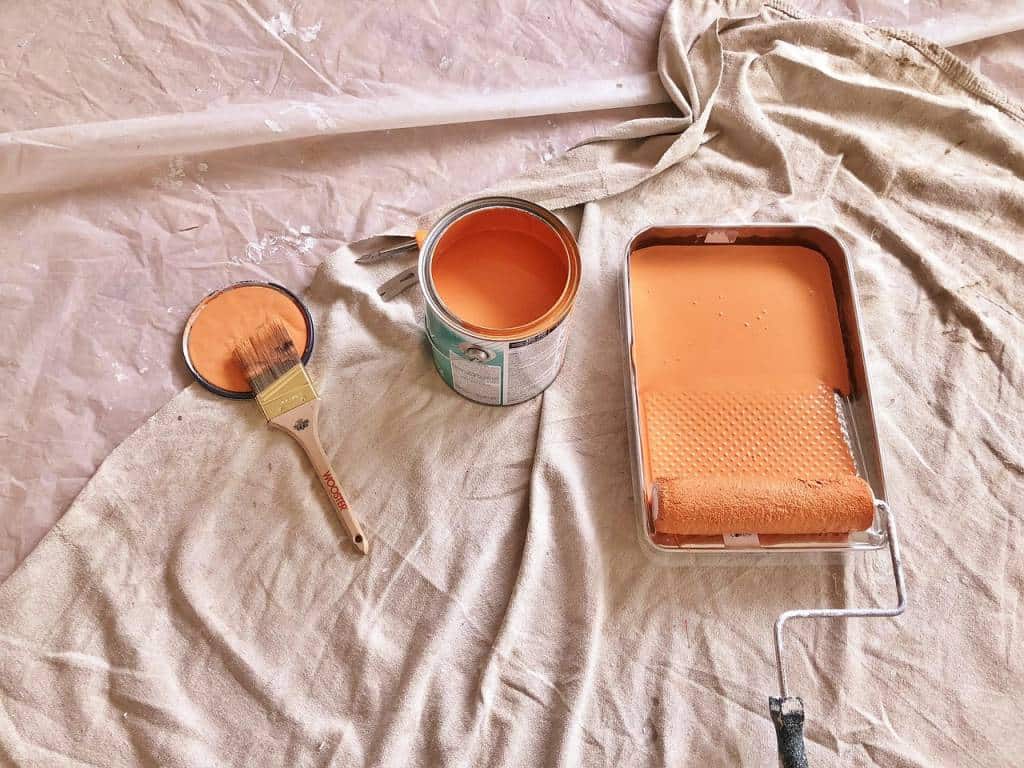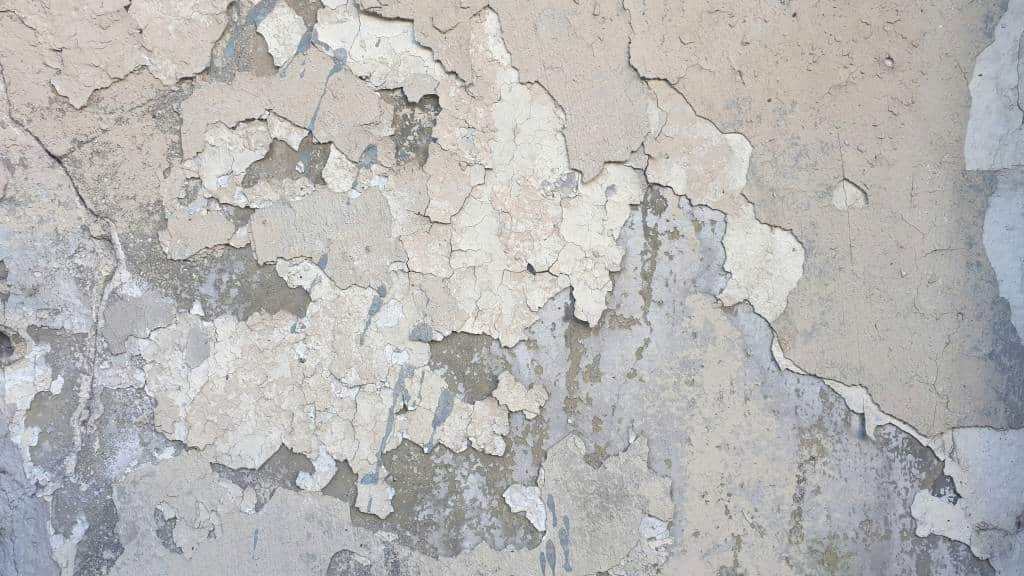👉 Looking for trusted help with exterior painting? Wade Paint Co is Mount Pleasant’s most reliable painting company.
Few things ruin a Mount Pleasant home’s curb appeal faster than peeling paint. What was once a perfect paint job on your siding, trim, or shutters can suddenly bubble, crack, and flake away because of bad painting practices or simply the salt air in Charleston. When that happens, your home can look tired and unprotected.
Faded, peeling paint isn’t just about looks, it leaves the materials underneath vulnerable to moisture and rot. In Charleston’s Lowcountry climate, peeling paint often points to trapped moisture, salt corrosion, or skipped prep work. If ignored, peeling can quickly snowball into wood rot, structural damage, or expensive repairs.
The good news? Peeling paint is both diagnosable and fixable. We see some of the worst peeling paint in Mount Pleasant and Charleston County and are experts at finding and fixing it. In this guide, we’ll cover how to spot different types of paint failure, the local environmental causes behind them, quick DIY fixes you can try, and when it’s time to call in professionals.
What Does Paint Peeling Look Like?

Not all paint problems are created equal. Before you reach for a scraper, it helps to understand what you’re dealing with:
- Blistering – Paint bubbles up, usually from moisture getting trapped beneath the surface or applying paint in direct sunlight. The surface looks like small raised blisters.
- Flaking – Paint lifts and falls away in uneven chips. This happens when old paint loses adhesion or new paint was applied over a dirty or glossy surface.
- Cracking / Alligatoring – Paint fractures into thin lines or a scale-like pattern, often from excessive sun exposure or using incompatible coatings.
- Peeling Sheets – Entire layers of paint slide off in sheets. This usually signals major adhesion failure or poor surface preparation.
Being able to identify the type of peeling tells you a lot about the cause—and the solution.
Why Paint Peels in Mount Pleasant’s Coastal Climate
Living by the water has plenty of perks, but the salty breeze that feels so refreshing can wreak havoc on your home’s exterior. Here’s why Mount Pleasant homes are particularly vulnerable:
1. Humidity & Moisture Cycles
Humidity in the Lowcountry swings wildly. Wood swells when it’s damp and contracts when it dries out. Over time, this constant expansion and contraction weakens paint bonds, causing cracks and peeling.
2. Salt Air Corrosion
The ocean breeze carries microscopic salt particles that settle into wood fibers and paint films. Salt is corrosive—it breaks down protective coatings and accelerates deterioration. That’s why even newer paint jobs can peel within just a few years if not properly prepared.
3. Intense UV & Heat
The Charleston sun doesn’t play nice. Prolonged exposure bakes paint, causing brittleness, fading, and eventually cracking or alligatoring. Darker colors suffer faster.
4. Poor Surface Preparation
The single biggest cause of premature peeling is inadequate prep. Painting over dirt, chalky residue, old peeling layers, or failing caulk means the new paint has nothing solid to grip. Within months, it starts peeling all over again.
5. Wrong Materials for the Job
Not all paint is created equal. Interior paints, cheap exterior products, or low-grade caulks can’t withstand Mount Pleasant’s salty humidity. Professional crews know to choose kiln-dried lumber, premium primers, and marine-grade caulks that stand up to the environment.
Quick Fixes for Minor Paint Peeling (DIY Solutions)

If you’ve spotted just a small area of blistering or flaking, you may be able to handle it yourself. Here’s how:
- Scrape & Sand – Use a paint scraper or wire brush to remove all loose paint. Then sand edges smooth to avoid visible ridges.
- Clean Thoroughly – Wash the surface with mild detergent or a mix of water and trisodium phosphate (TSP). Rinse well to remove salt, mildew, or chalky residue. Let it dry completely.
- Prime Bare Spots – Apply a high-quality exterior primer, preferably oil-based or stain-blocking, to seal exposed wood. This step ensures adhesion.
- Repaint with Premium Exterior Paint – Choose a top-tier acrylic latex exterior paint made to handle humidity, sun, and salt. Apply at least two coats.
⚠️ Pro Tip: Avoid painting in direct sunlight or when humidity is above 85%. Rushing the process is one of the fastest ways to see new peeling down the road.
When DIY Isn’t Enough

Spot fixes work for small areas, but sometimes peeling is a symptom of deeper issues that demand professional attention. If scraping the paint shows soft or spongy wood, you probably have rot or siding damage. You’ll need carpentry work before applying any paint. When peeling spreads across large surfaces like siding, soffits, or trim, it often signals deeper moisture or prep failures that a spot repair won’t solve. Historic Mount Pleasant homes are complex. Using the wrong prep methods or paint can harm original materials. It may also break preservation standards. In other cases, multiple layers of failing paint may need full stripping and restoration before a fresh coat will adhere properly. And sometimes the problem extends beyond paint altogether—boards may need replacing with kiln-dried or pressure-treated lumber to ensure the finish lasts. Wade Paint Co shines here. They combine painting and carpentry skills for a one-team solution. This approach ensures lasting results, not just temporary fixes.
Preventing Paint Peeling in 2025 and Beyond

The best fix for peeling paint is prevention. With Mount Pleasant’s climate, that means being proactive:
- Invest in Prep Work – Sanding, caulking, priming—skipping any step shortens the lifespan of your paint.
- Choose Climate-Ready Materials – Ask for premium exterior paints, marine-grade caulks, and kiln-dried replacement wood.
- Schedule Regular Maintenance – Have your home inspected every 2–3 years. Catching peeling early prevents bigger damage.
- Trust Licensed, Insured Pros – A bonded team like Wade Paint Co not only delivers quality but also protects you legally and financially.
FAQs: Quick Answers for Homeowners
How long should exterior paint last in Mount Pleasant?
With proper prep and premium paint, 7–10 years is typical. Without it, you may see peeling in just 2–3 years.
Can I just paint over peeling areas?
No—paint won’t stick to peeling layers. You must scrape, sand, prime, and repaint for a lasting repair.
re there special considerations when painting homes near historic or community landmarks like Mount Pleasant Memorial Waterfront Park?
Yes. Homes close to landmarks or public spaces often face higher visibility and stricter preservation standards. Paint failures near places like Mount Pleasant Memorial Waterfront Park can be more noticeable and may even affect property values in the area. In these cases, it’s especially important to use proper prep techniques, premium exterior paints, and historically appropriate colors. Wade Paint Co’s team understands both the aesthetic expectations and the environmental challenges of painting in these high-profile locations.
Need help with your Peeling Paint?
Peeling paint is one of the most common—and most preventable—issues facing Mount Pleasant homeowners. While DIY fixes can handle small trouble spots, lasting results require the right prep, materials, and local expertise.
At Wade Paint Co, we don’t just cover up the problem. We diagnose, repair, and protect your home against Charleston’s salt, humidity, and sun so your paint lasts. If you are curious about the cost of getting your Mount Pleasant home painted we covered this exact topic in a blog you can read here.
👉 If your Mount Pleasant home is showing signs of peeling paint, contact Wade Paint Co today for a free estimate. We’ll help restore your curb appeal—and your peace of mind.



